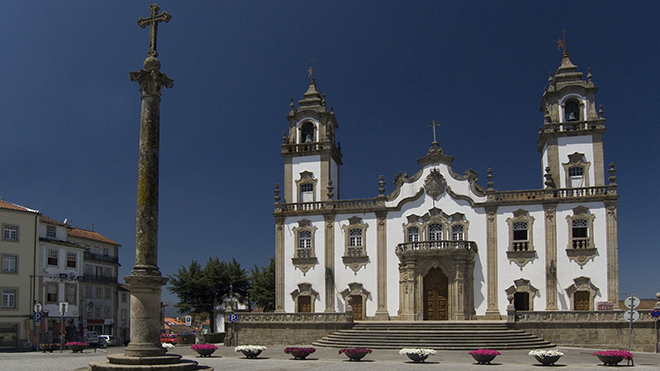Viseu - Accessible Tour

An old city where the predominating colours are the grey of the granite and the green of the many gardens that beautify it, Viseu has been singled out several times for the quality of life it give its inhabitants.
Download the map and follow the tour
The care shown to the people who live in or visit it is also evident in terms of accessibility, since the pedestrian streets have stable, smooth surfaces that are in a good state of repair, which ensures that getting around is comfortable for everyone. You often find central lanes with granite slabs, as in Rua Direita, for example, or tactile guides as in the area surrounding the Praça da República. In general, the footpaths are wide with lowered crossings so that persons with reduced mobility may move around independently.

Photo: Viseu - Funicular © Emanuele Siracusa
TWe suggest that the best way to get to know the city is to start your itinerary in the suburbs, next to one of the oldest monuments - the Cava de Viriato - an earthwork fortification that is over two thousand years old that is thought to date back to the time of Roman occupation. Located near the Largo da Feira de São Mateus and the Funicular station, a means of transport accessible to people with impaired mobility that connects this part to the historic centre. As this is the most convenient way to tackle the hill we suggest that you use it and start your tour of Viseu in the Cathedral churchyard, Adro da Sé (7), which is near the Station.

Photo: Viseu - Adro da Sé © ARPT Centro de Portugal
The Cathedral (8), with a majestic façade crowned by two large towers that define the profile of the city, is part of an imposing group of monuments in granite known as the Três Escalões Palace. The entrance has a flight of steps that make it impossible to gain access to the inside, where you find the majestic vaults decorated in the Manueline style and a Baroque altarpiece. An adjoining building houses the Grão Vasco Museum (9), which has a large interior space without barriers. Its various notable works include a fine set of screens from the 15th-16th century by the painter who gave it its name. On the other side of the square stands the Igreja da Misericórdia (6) with its façade profusely decorated in rococo style. It introduces a note of joy in contrast to the granite cluster. The entrance has a flight of steps but there is a platform lift to facilitate access.

Photo: Viseu - Igreja da Misericórdia Sé © Shutterstock | Álvaro German Vilela
From here we suggest taking a completely accessible route to get to know the centre of Viseu. Start at Praça D. Duarte (5), one of the town’s main squares, where you can see the statue of the king it is named after and enjoy the majestic Passeio dos Cónegos, which provides the backdrop. Proceed down the Rua Direita (4) and Rua Formosa (3), the main roads where, in addition to the many traditional shops, you will also find various restaurants and cafés where you can taste the local dishes, with particular emphasis on roast veal (Vitela à Lafões) and sweets such as castanhas de ovos (egg chestnuts) and viriatos (v-shaped pastries).

Photo: Viseu © Emanuele Siracusa
The Praça da República, popularly known as Rossio, is the heart of the city and is flanked by some of its most interesting buildings. The shadow of the lime trees and the terraces are used by locals and tourists alike for a restful pause in which to appreciate the tile panel covering the walls and depicts an allegory of the rural world. This square starts from the steps leading up to the church Igreja da Ordem Terceira de São Francisco (2), a fine example of 18th century religious architecture . You should look around the inside, especially at the tiles depicting the life of St Francis and the rococo altarpieces. Head for the entrance on the left side, although you will find a step that might impede access unless you have some help.

Photo: Viseu © Arquivo Turismo de Portugal
Since Viseu has such a wealth of gardens, we suggest one of them to end this itinerary - the Parque Aquilino Ribeiro (1). Regarded as the green lung of the city, this is a pleasant place with a range of botanical species, a lake and grassy areas where you can enjoy contact with nature. In an attempt to arouse your interest in new discoveries, but now literary ones, we should remind you that the park is named after the writer Aquilino Ribeiro (1885-1963), who came from this district, who portrayed the soul and the character of these people so well in his works.







 Explore
Explore 
 Remember and Share
Remember and Share 


